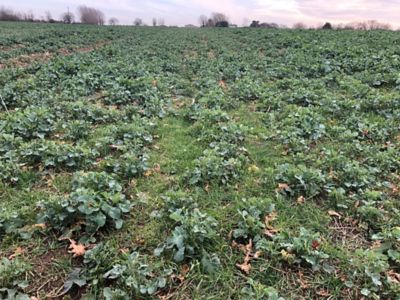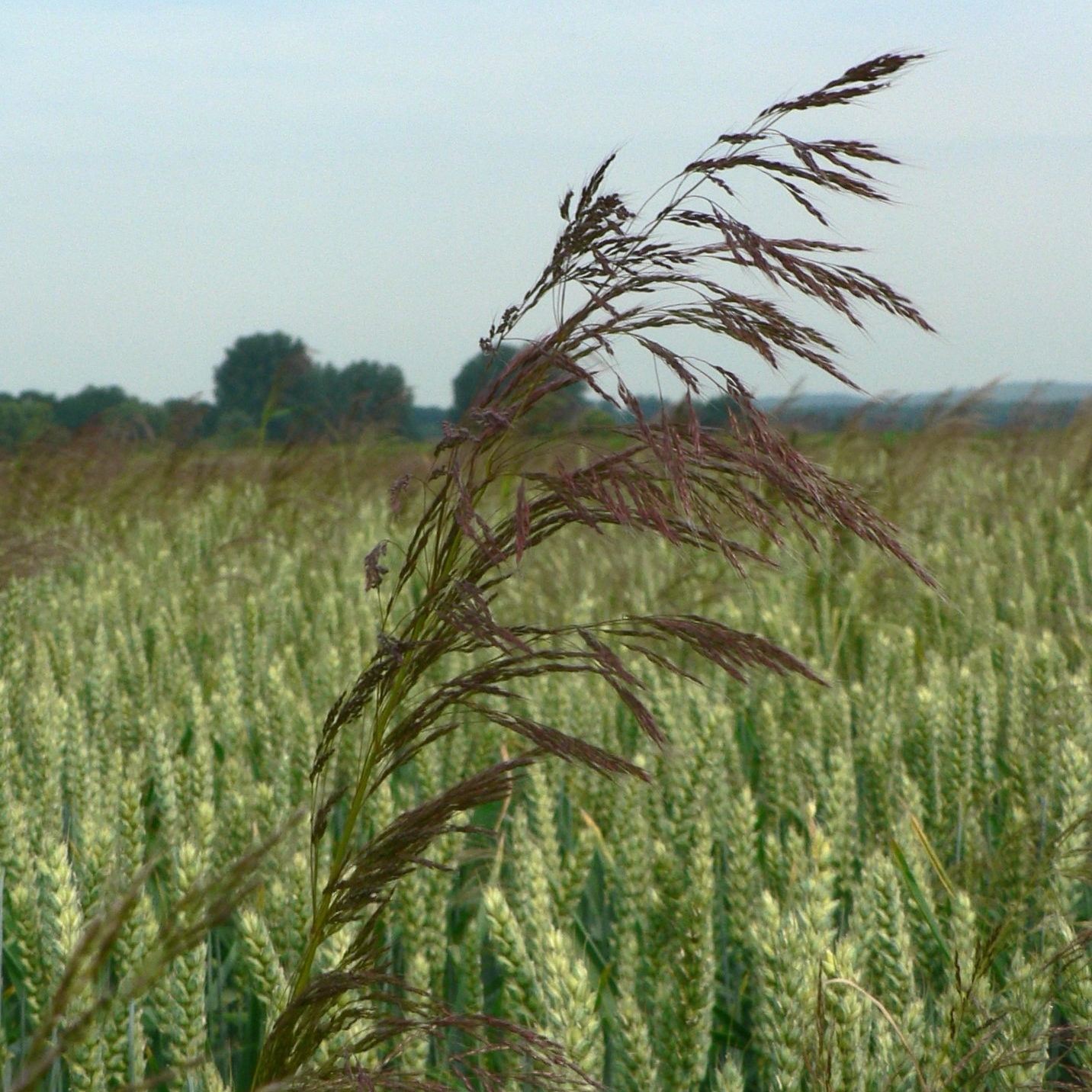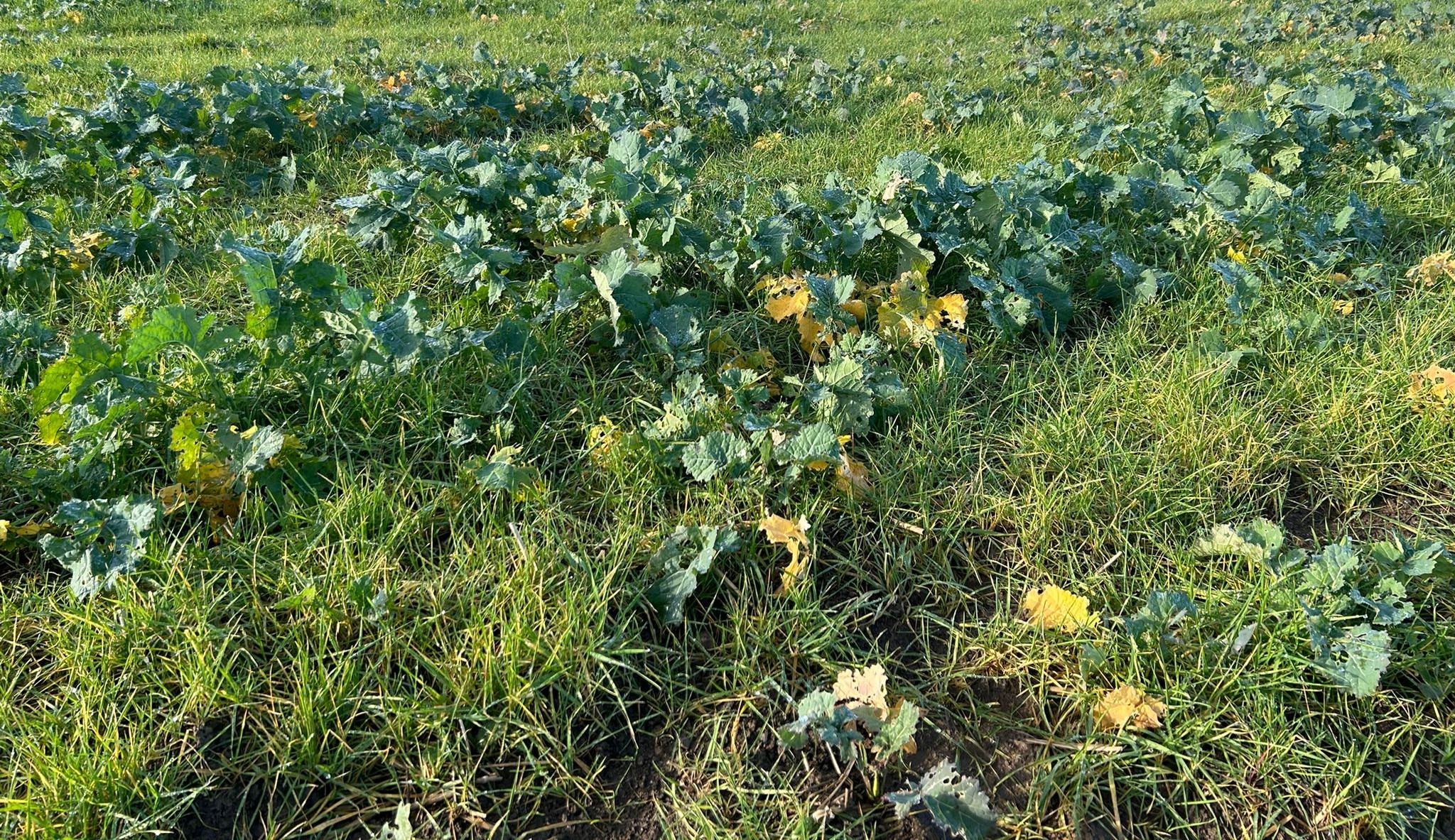Blackgrass is one the UK’s most prominent yield-robbing grassweeds. Spreading quickly, the weed impacts both cereal and oilseed rape rotations.
Blackgrass in oilseed rape

What is blackgrass?
Blackgrass is a UK-native annual grassweed that is mostly found in oilseed rape and cereal crops in the South and East of England. However, it has gradually spread north and west, recently appearing in South-East Scotland and Northumberland.
Blackgrass can often spread across arable fields from the margins, and prefers heavy, poorly drained soils, although it has recently started to become more prevalent on sandy, gravelly and chalky soils.
The most significant feature of blackgrass is its ability to produce hundreds of seeds at a time. In fact, a single seed head is capable of producing up to 200 seeds, and dense populations of up to 2,000 plants per square metre are not uncommon. Whilst the average seed decline in the soil is 75% per year, 80% of blackgrass emergence occurs in early autumn (August to October). This corresponds with the main drilling and emergence period of oilseed rape.
Differing types of herbicide resistance now occur on the majority of farms where herbicides are used against blackgrass. Resistance has been detected in virtually every county in England, with less issues in Wales and Scotland. The Weed Resistance Action Group (WRAG) is able to offer advice and guidance on the management of resistant populations.
As well as its impact of oilseed rape yields, blackgrass can be impacted by ergot fungal disease, which can further contaminate the yield at harvest.
Blackgrass biology
Blackgrass (Alopecurus myosuroides) is an annual or hardy annual tuft-forming, spiked, seed propagated grass, common on cultivated or other disturbed ground.
The weed is distributed throughout the UK but is most prevalent in the South and East of England.
Blackgrass prefers medium to heavy chalky, fresh to somewhat moist soils.
Blackgrass plants can produce 20 tillers and if each of these has only 100 seeds this single plant will still produce 2000 seeds.
Seed can remain viable in the ground for 1-5 years. Blackgrass seeds often grow rapidly with 80% emerging in the autumn. Blackgrass also has a very high competitive ability with 12-17 blackgrass plants/m2 typically resulting in a 5% yield loss in wheat (source: Managing weeds in arable rotations – AHDB guide).
The blackgrass seeds shed before crop harvest in June to August. Seed dormancy can then be affected by soil moisture and temperature conditions.
Blackgrass seeds tend to have low dormancy in warm dry conditions. Most blackgrass emerges from seeds held in the top 5cm of the soil surface in early autumn, August onwards with blackgrass continuing to emerge from clods as they break down in the winter.
Most oilseed rape crops are now currently established after cultivations that retain most of the blackgrass seeds in the top 5cm of the soil surface. With 80% of blackgrass emergence occurring in early autumn, treatment with either contact or residual graminicides within the winter oilseed rape crop offers an important and effective method of control.

How can I identify blackgrass in oilseed rape?
Blackgrass has upright, slender, rounded stems with few nodes. Small plants have corkscrew-spiralling slender, hairless, rough leaves with a blunt tip that are often dark-violet at the base.
The leaf blade has a pronounced groove in the middle, with the upper side shiny and under side dull and smooth. The ligule is long and irregular.
- The leaf sheath can be reddish in colour towards the base, particularly in more mature plants.
- Plants grow in tufts up to 80-90cm tall and forms single flowered spikelets on a very narrow, dark purple / red flowerhead up to 8cm long.
Blackgrass can be confused with loose silky bent as a developing plant. This is due to the reddish, purple colouration on the sheath of the leaf. However, silky bents tend to prefer lighter soils.

Why is blackgrass a problem?
Blackgrass is a considerable problem in oilseed rape and cereal rotations due to the incredible number of seeds produced, its competitive ability so reducing yield potential and affecting harvesting.
Another reason for increased blackgrass infestations is their resistance against common herbicides.
These resistance mechanisms, are two-fold:
Enhanced Metabolic Resistance - The most common resistance mechanism occurs because the plant itself is able to detoxify the herbicide’s active ingredient before it’s able to take effect. This enhanced metabolism occurs in a wide range of herbicide products but to varying degrees.
Target Site Resistance - Prevents the herbicide from working effectively due to one or more changes in the plants physiology.
Blackgrass populations as a whole can contain individuals that are susceptible to the herbicide as well as those that exhibit either of the two resistances we’ve mentioned above.

How do I control blackgrass?
To prevent blackgrass populations increasing about 95-100% control is consistently required. Effective control is managed through integrated crop management as neither non-chemical nor chemical control methods when used in isolation provide complete control.
Ploughing usually buries blackgrass seeds to a depth of >5cm from which seedlings are unlikely to survive or emerge and can reduce populations by up to 70%. (Source: Intregrated management of blackgrass I AHDB). This is no longer a common option in the establishment of winter oilseed rape as it can affect the soil moisture content at a critical time and maybe best used in other parts of the rotation.
Using min-till techniques when establishing oilseed rape will mean the blackgrass will germinate from shallow depth and is best placed for root uptake of propyzamide.
Min-till can create opportunities for stale seedbeds prior to drilling. If there is sufficient soil moisture for germination of blackgrass seeds, following harvest of the previous crop, they can be controlled with glyphosate or cultivation machinery.
Competitive crops can compete with weeds to varying levels and whilst established winter oilseed rape can sometimes suppress weeds, the introduction of companion cropping has the potential to help increase the ‘suppression effect' whilst also helping to maintain oilseed rape populations in the early establishment phase by reducing attack from cabbage stem flea beetle.
Product choice
Once the oilseed rape crop is evenly established, and has reached at least the three true leaf stage, applications of Kerb® Flo 500 and Astrokerb® can be made from 1st October.
Kerb Flo 500 is a liquid suspension concentrate formulation of 500 g/litre propyzamide and Astrokerb® is a suspension concentrate containing 500 g/litre propyzamide and 5.3 g/litre aminopyralid for control of both grassweeds and key broad-leaved weeds such as poppy and mayweed in oilseed rape.
Propyzamide is a residual herbicide that requires soil moisture for successful root uptake by the target weeds. Best residual activity, and hence results, is achieved from applications to soils of fine tilth.
Astrokerb and Kerb Flo 500 can also be used in conjunction with other graminicides offering blackgrass control.
Early applications of ‘fop' and 'dim' graminicides are used to primarily control volunteer cereals and any early blackgrass flushes. Clethodim containing products also offer effective blackgrass control but label restrictions restrict its use in tank-mix with other products.
There is currently no known resistance to propyzamide, so it forms an important method of offering effective blackgrass control.
For information on how to get the best from propyzamide, go to our propyzamide back to basics page.
Kerb Flo 500 Herbicide
Kerb® Flo 500 is the tried and tested herbicide for controlling resistant blackgrass and other grass and broad-leaved weeds in oilseed rape. It still provides outstanding control with no reports of herbicide resistance anywhere in the world.
Astrokerb Herbicide
Astrokerb® is a contact and residual herbicide delivering control of blackgrass, poppy, mayweed and other grass and broad-leaved weeds in winter oilseed rape.
FAQs
How does blackgrass spread?
Blackgrass is propagated exclusively by seeds and each individual plant will produce between two and twenty seed heads containing up to 100 seeds each.
This means infestation can occur very quickly, considerably reducing yield.
Around 80% of blackgrass seeds germinate in the autumn, which is why it can be detrimental to winter crops. In particular wet and saturated soils, the seeds can remain dormant until the following spring when germination can impact early spring crops too.
How can blackgrass impact yield?
Blackgrass is a big concern throughout England in particular, further exacerbated by continued herbicide resistance and the fact that blackgrass can carry take-all fungus which can spoil entire harvests.
Although individual plants are only moderately competitive, very high populations can compete for vital nutrients, particularly nitrogen, decimating yields by 70% or more.
How can I test blackgrass for herbicide resistance?
The reliability of the results based on plant assays is dependent on the quality of the seed sample from which they are grown. To achieve effective results, the seeds must be ripe on collection before sending off for testing.
This can be achieved by various means:
Collect seeds when the majority are mature. Collecting too early or too late is likely to lead to samples with low viability. With grass weeds the best time is when about 20 % of the seed have been shed.
Harvest seeds from 40 different plants minimum, covering the whole area under investigation.
Collect seeds in paper bags by shaking or gentle rubbing mature inflorescence in dry conditions.
Don’t collect heads or full plants.
Avoid contamination with seeds from other species where possible.
Do not collect under in wet conditions. Collection is harder and seed can be become very dormant.
Air-dry the samples at ambient temperature to avoid mould.
Do not heat-dry samples and protect from UV radiation and freezing.
Prior to storage the seed should be winnowed to removed chaff, sterile seeds and stalks.
Place the dry ripe seed a sealed bottle or small paper bag – Do not store or ship samples in plastic bags.
Minimum required amount: 100 g.
Clearly label the sample with key information including contact information and site location.